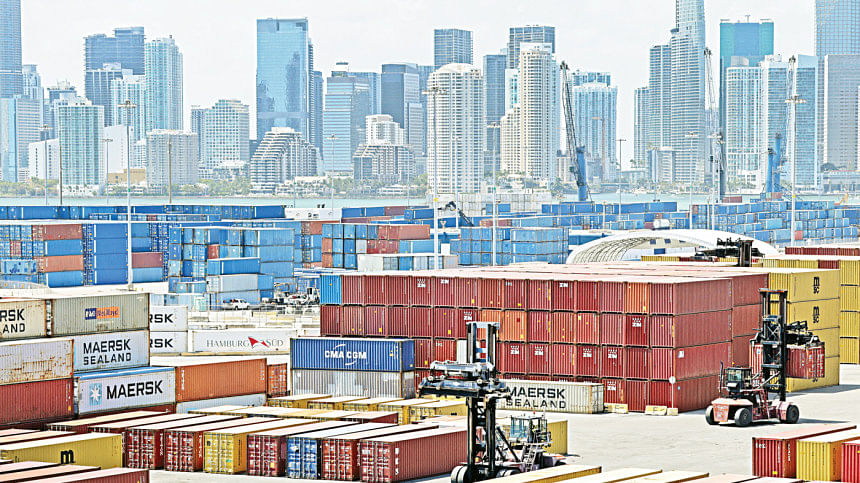US policy incoherence sets a tariff trap

In July, the White House set the pillars of its economic strategy: a 15 baseline tariff on key trading partners and gutting corporate and income taxes. Revenue from import duties has now reached a level unseen in decades, over $100 billion so far in 2025. Problem is, the administration spent that money and much more on $4 trillion of tax cuts, while other goals - like onshoring production - will whittle down collections. Given the size of the fiscal hole, the temptation will be to come back for more.
Customs duties in June hit $27 billion, a month during which the average effective tariff rate was 15.6 percent, according to the Yale Budget Lab. Trade deals with Japan and the European Union announced in recent days include a baseline 15 percent levy, meaning that an even higher average rate looks plausible when factoring in more punitive levels on China and specific categories of goods.
If this level holds, Treasury Secretary Scott Bessent's estimate that annual customs revenue could hit $300 billion will end up being about right. President Donald Trump has gone further, though, claiming that tariffs can replace the federal income tax. Commerce Secretary Howard Lutnick narrowed that to exempting those making $150,000 or less. Right now, that's a big stretch. The federal income tax raised $2.4 trillion in 2024, with around $565 billion coming from the bottom 90 percent of earners, according to Treasury Department data.
The gulf will only grow. Tariffs are effectively a tax on consuming imports. Many consumers and manufacturers will look to avoid it, either purchasing or producing US goods instead. Where substitution is impossible or costly, it may just dent demand, thereby reducing economic activity: budget scorekeepers tend to assume that $1 of tariff revenue leads to a $0.25 decline in income and payroll tax revenue.
Yet while incentivizing domestic production is ostensibly the overarching goal of the trade war, extra revenue is becoming all the more crucial. Trump's signature fiscal legislation, signed earlier this month, adds $3 trillion in debt over the next decade, according to the Congressional Budget Office, primarily to codify individual and corporate tax cuts. Rolling back those reductions is a non-starter for Republicans, while even opposition Democrats have signed onto policies like exempting tipped income.
Even just collecting owed rates is getting harder. The Internal Revenue Service estimated that there was a $600 billion "tax gap" in 2022 that could be closed with better enforcement. The administration has instead proposed a 50 percent cut to the budget for tax collectors. When fiscal reality sets in, there are few other places to turn than back to the tariff well.
The United States has collected more than $100 billion in customs levies in 2025 as effective tariff rates have climbed far beyond their average in prior years of around 2 percent.
US Commerce Secretary Howard Lutnick has said that tariffs could ultimately replace income taxes for those making $150,000 or less. The federal income tax raised $2.4 trillion in 2024.

 For all latest news, follow The Daily Star's Google News channel.
For all latest news, follow The Daily Star's Google News channel. 



Comments